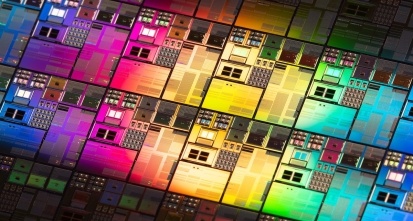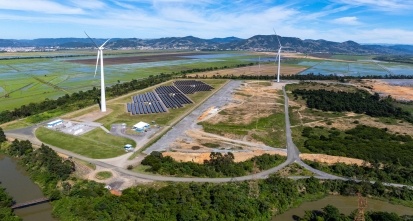Gain new perspectives for faster progress directly to your inbox.
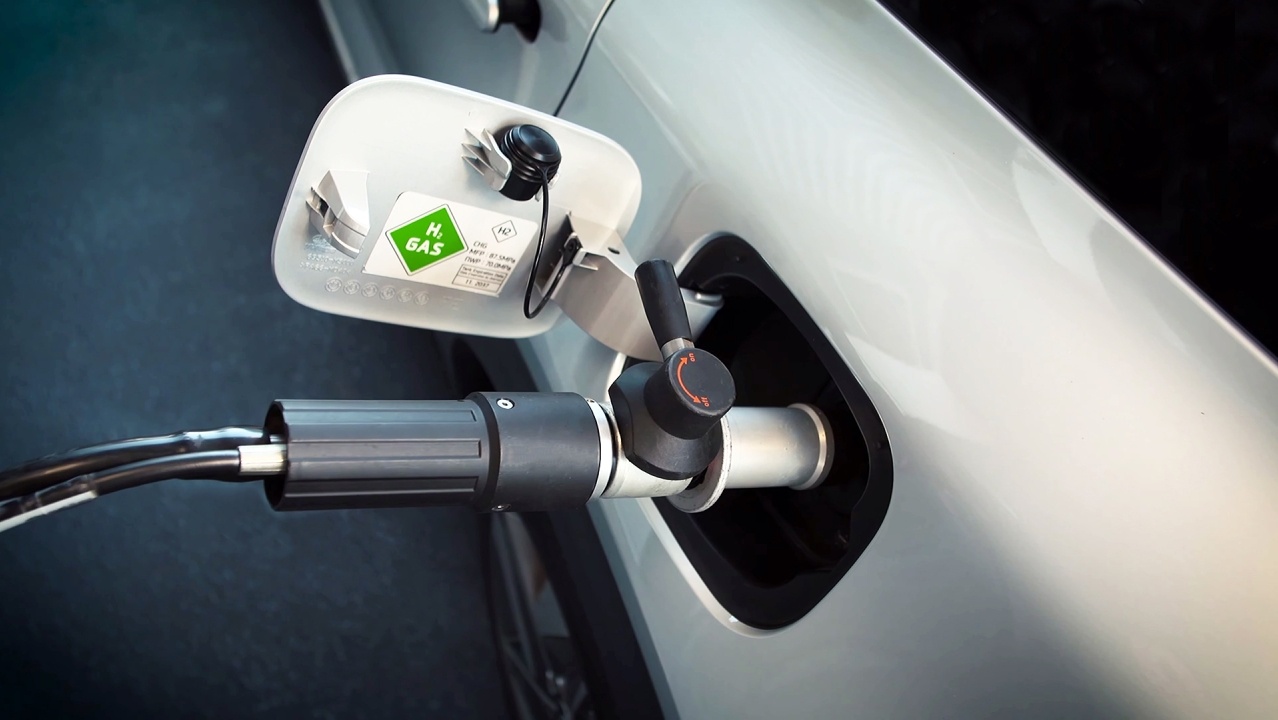
Since the mid-late 20th century, the atmospheric concentration of greenhouse gases has been increasing, contributing to ongoing contemporary warming to the extent that climate change can now be detected from any single day of weather. Today, owing to their heavy reliance on fossil fuels, the world’s largest economies still produce vast quantities of CO2 (Figure 1).

In the ongoing pursuit of greener energy sources, lithium-ion batteries and hydrogen fuel cells are two technologies that are in the middle of research boons and growing public interest. The li-ion batteries and hydrogen fuel cell industries are expected to reach around 117 and 260 billion USD within the next ten years, respectively.
A key driver for interest in lithium-ion batteries is their explosively growing uses in electric vehicles as well as in consumer electronics among other applications, while H2, as both an energy source and storage medium,– finds uses in transportation, energy supply to buildings, and long-term energy storage for the grid in reversible systems. Both technologies are expected to play key roles in the decarbonization of electricity supplies.
As analyses using our CAS Content Collection™ have shown, much of the research over the past decade on lithium-ion batteries and hydrogen fuel cells has focused on solving contemporary challenges and barriers to their use–some of which we will discuss here. If these technologies are to transform our energy use and transition us into a greener future, this research will be critical.
Lithium-ion batteries vs Hydrogen fuel cells: which are more promising?
On the surface, it can be tempting to argue that hydrogen fuel cells may be more promising in transport, one of the key applications for both technologies, owing to their greater energy storage density, lower weight, and smaller space requirements compared to lithium-ion batteries. Hydrogen-powered vehicles can also be refuelled more quickly than vehicles powered with lithium-ion batteries. However, hydrogen fuel cells are not without disadvantages: an estimated ~60% of stored H2 energy is lost in the process of packaging energy from H2,which amounts to around three times as much lost energy when compared with lithium-ion battery use.
Clearly, however, both technologies have numerous applications and direct comparisons are therefore complicated. Furthermore, this perspective ignores the ongoing research, as well as the wider costs and benefits of the technologies. Our CAS Content Collection search allows us to delve beneath the surface and gain a deeper understanding of how lithium-ion batteries and hydrogen fuel cells are used today and might be used in the future.
Challenges in lithium-ion battery use
The manufacturing and disposal of li-ion batteries have always been the subjects of political and environmental concerns, with their considerable associated pollution and non-renewable energy sources of lithium and other key resources remaining highly pertinent.
With explosively growing numbers of electric cars (and increasing battery size) in tandem with the rapid disposal of lithium-ion batteries in smartphones and other consumer electronics, energy waste and reliance on non-renewable resources are becoming more significant. Indeed, it is anticipated that in 2040, 58% of all cars sold worldwide will be electric cars, and the total amount of waste generated could be as much as 8 million tons. Much recent research on lithium-ion batteries, therefore, has focused on how to recycle them, with the aim of reducing pollution and easing pressure on mineral reserves.
Today, only around 5% of lithium-ion batteries are recycled globally because of limitations, such as fluctuating financial values of battery materials, lack of technological convergence in battery designs and materials (and associated recycling labor costs) as well as within recycling facilities, lack of monetization of many recycling benefits (including material security, safety, and environmental benefits) and absence of recycling regulations across much of the world.
Challenges in hydrogen fuel cell use
Although costs of hydrogen fuel cells are significant, largely owing to the use of platinum, the greatest challenge is the difficulty in storing (and transporting) H2. Indeed, the success of H2 as a consumer fuel directly depends on finding robust H2 storage materials and developing a refined, safe system for its transportation.
Key research trends: lithium-ion batteries
As discussed, recycling is of major interest in li-ion battery research since it could help address contemporary issues with pollution, waste, and limited mineral reserves associated with LIBs. The annual publication volume growth on this topic (32%) far exceeds that of overall scientific publications (4% annually), suggesting an emerging interest (Figure 2).
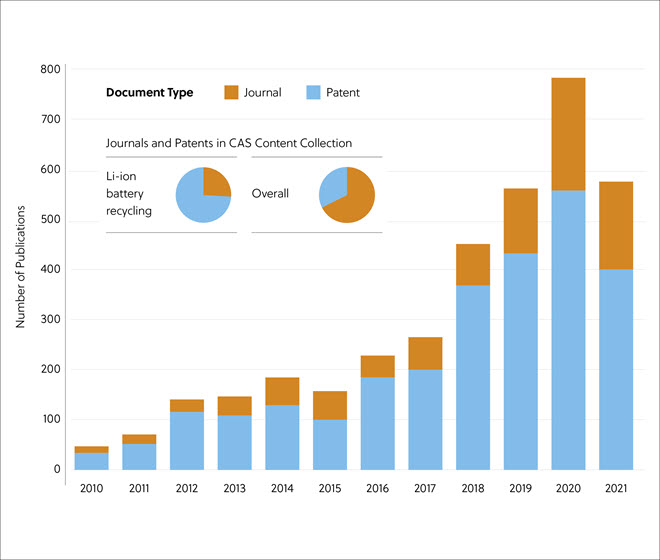
Encouragingly, considerable research effort has been made towards previously lesser-studied lithium-ion battery components (suggestive of an emerging, more holistic recycling management view) and towards disassembly (Figure 3), which is preferable environmentally because it maximizes the amount of recyclable material. Direct recycling, the removal of cathode material for reconditioning followed by reuse in new batteries, has also seen increased interest (Figure 4) and is likely to have lower energy costs and reagent costs than other recycling methods.
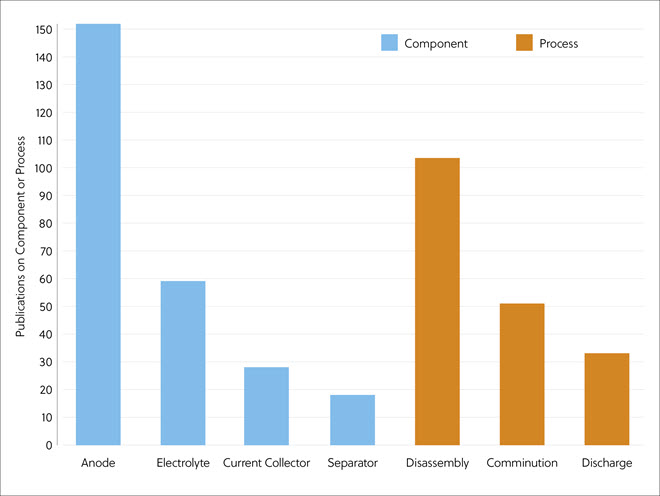
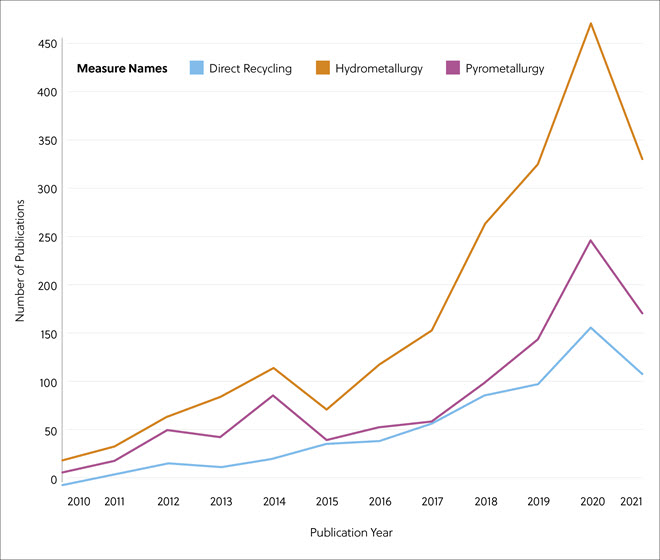
Key research trends: Hydrogen fuel cells
There has been a steady increase in the volume of patents in the H2 fuel space since 1997, demonstrating the growing global interest in this technology (Figure 5). Encouragingly, H2 storage has remained the leading topic of interest over the last decade (Figures 6 and 7); the development of a H2 economy is highly dependent on the ability to store and transport the gas, since it is not feasible to establish a supply chain without this capability.
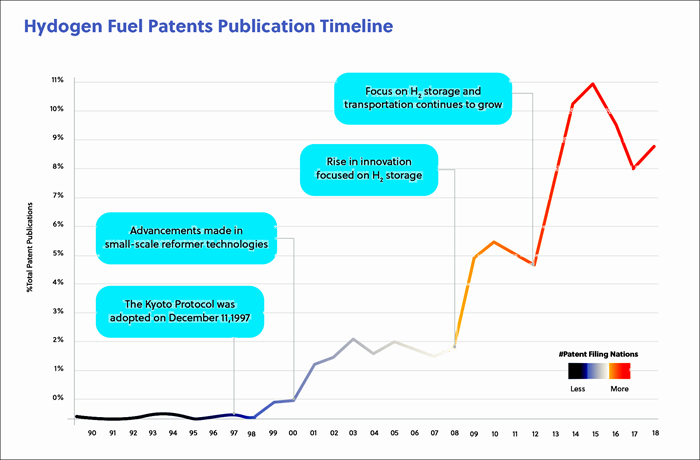
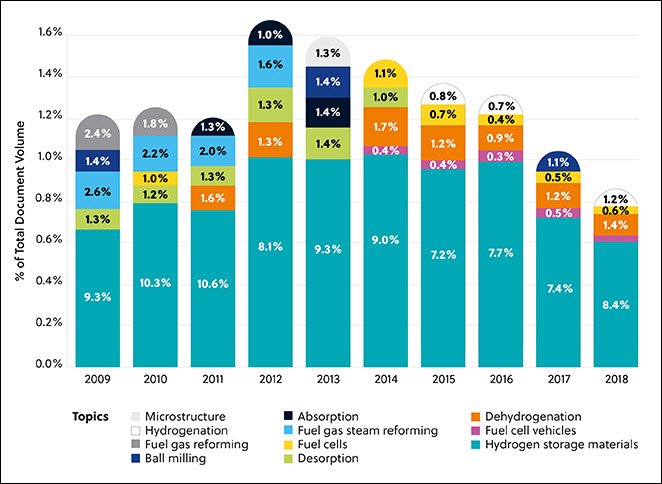
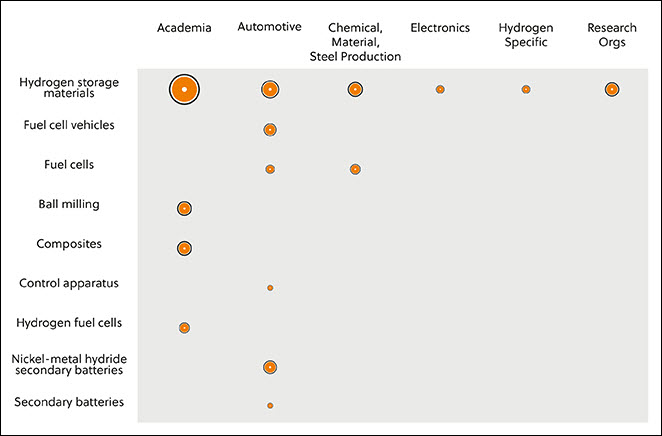
Hydrogen storage is followed by dehydrogenation (Figure 6), which has been established as the second leading area of innovation since 2012. With dehydrogenation methods, it is possible to extract H2 gas from liquid H2 carriers such as ammonia–chemicals for which the storage and transportation infrastructure already exists. Thus, this topic could represent a key solution in efforts to utilize H2 more widely. Ongoing research seeks to increase the efficiency of costly processes such as the Haber-Bosch process, required to extract H2 from its carrier (in the case of an ammonia source), or find more energy-efficient alternatives.
Looking ahead
The CAS Content Collection has allowed us to investigate key research trends in the ongoing pursuits to harness the potential of lithium-ion batteries and hydrogen fuel cells–two key technologies that could help transform global energy use for a greener future.
Moreover, research appears to be focused on solving key contemporary issues associated with these technologies–in the case of lithium-ion batteries, recycling is undergoing a research boon, while H2 storage remains the principal topic of interest in hydrogen fuel cell work.
See our lithium-ion battery recycling and hydrogen fuel cell white papers for deeper insights into the evolving economic, political, environmental, and research landscapes of these two key technologies.


